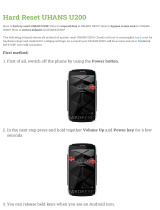9 Deep Learning Inferencing with Mipsology using Xilinx ALVEO™ on Dell EMC Infrastructure
There is no additional R&D effort to run the same trained neural network on various sizes of
Zebra accelerators or in different locations, from data center to embedded. If the size of a neural
network grows during the life-time of the product, a simple upgrade of the hardware, keeping the
same Zebra stack, will accommodate the increased computational power of a larger neural
network. The ongoing enhancement of Zebra will reduce the computing needs, letting the user
do more computing on the same hardware without incurring in additional cost. As Zebra runs
the same neural networks as a CPU or a GPU, without migration and changes, it is also
possible to mix the resources and maximize the investment in hardware to accommodate usage
peaks.
Dell EMC PowerEdge Servers
The evaluation was based on Dell EMC PowerEdge R740/R740xd servers to host the Xilinx
ALVEO™ boards. The PowerEdge R740/R740xd is a general-purpose platform with highly
expandable memory (up to 3TB) and impressive I/O capability to match both read-intensive and
write-intensive operations. The R740 is capable of handling demanding workloads and
applications such as data warehouses, E-commerce, databases, high-performance computing
(HPC), and Deep Learning workloads.
Figure 7. Dell PowerEdge R740/R740xd.
The PowerEdge R740/R740xd is Dell EMC’s latest two-socket, 2U rack server designed to run
complex workloads using highly scalable memory, I/O capacity, and network options. The
R740/R740xd features the Intel Xeon processor scalable family, up to 24 DIMMs, PCI Express
(PCIe) 3.0 enabled expansion slots, and a choice of network interface technologies to cover NIC
(Network interface card) and rNDC (rack network daughter card). In addition to the R740’s
capabilities, the R740xd adds unparalleled storage capacity options, making it well-suited for
data intensive applications that require greater storage, while not sacrificing I/O performance.
See figure 7.
Zebra Applications
Zebra is a perfect fit for CNN acceleration for still and video image processing in a wide range of
applications. Zebra can ideally replace CPUs and GPUs without added engineering costs.














